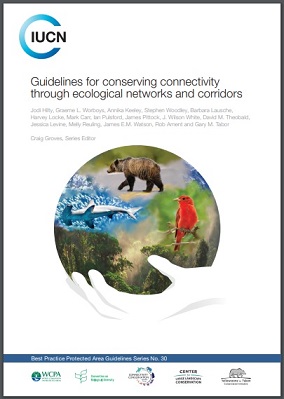
Ecological connectivity is the unimpeded movement of species and the flow of natural processes that sustain life on Earth. This definition has been endorsed by the Convention on Migratory Species (CMS, 2020) and underlines the urgency of protecting connectivity and its various elements, including dispersal, seasonal migration, fluvial processes and the connectivity that is inherently present in large wild areas... These Guidelines provide tools and examples (1) for applying ecological connectivity between protected areas and other effective area-based conservation measures, and (2) for developing ecological networks for conservation. In doing so, these Guidelines advance best practices for protecting ecological networks that maintain, enhance and restore connectivity across both intact and human-dominated systems. As demand grows for innovative solutions at international, national and sub-national levels, these Guidelines recommend formal recognition of ecological corridors to develop conservation networks and thus ensure effective conservation of biological diversity.












